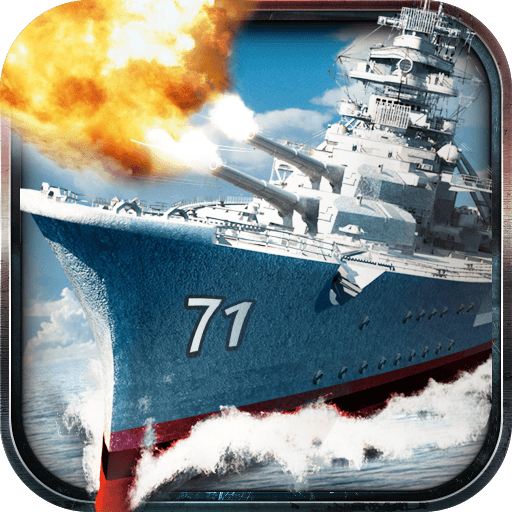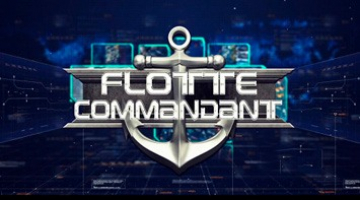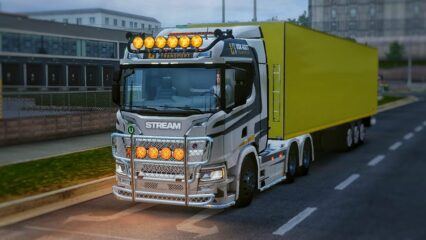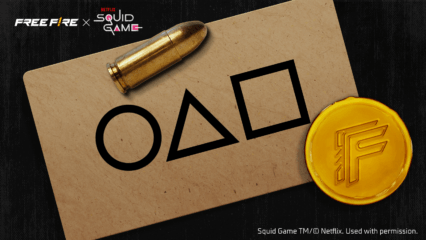Fleet Command—Conquer Your Enemies in the High Seas!
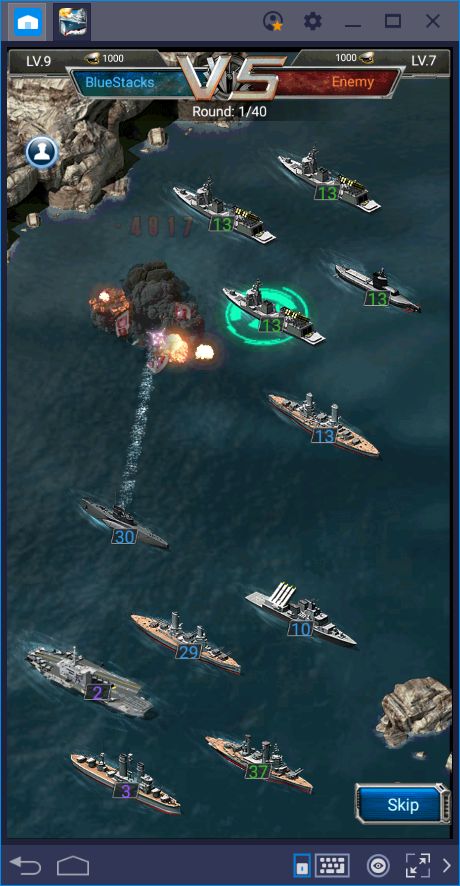
Sometimes, it doesn’t take a novel concept to make a good game. Fleet Command—not to be confused with Star Trek: Fleet Command —is the living embodiment of this expression as it offers mechanics that we’ve already seen, but with a fresh coat of paint.
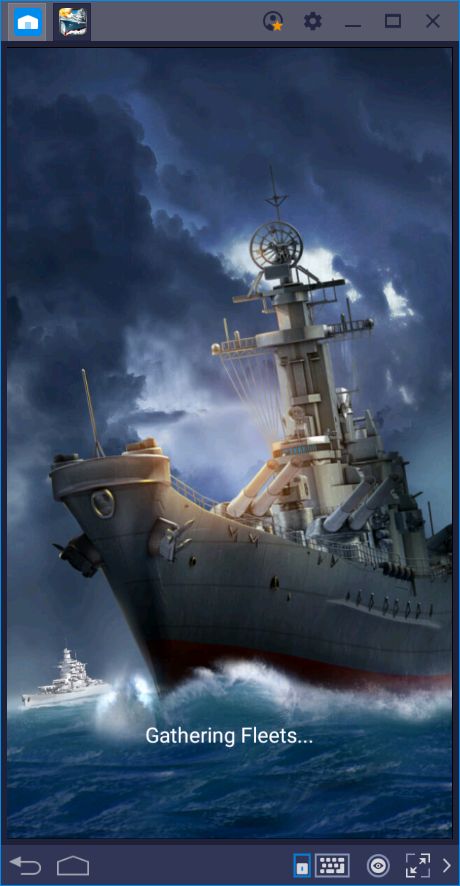
This title is the brainchild of developer Movga Games, a studio whose only foray into the gaming industry is this game and another product by the name of Mr. Billionaire. With so few games under their belt, as well as the proliferation of conquest games in the mainstream market, most gamers would greet Fleet Command with a bit of skepticism. However, after giving it a chance, and playing it for some time, we think that this game has several features in place that definitely make it worth playing.
Improving the Conquest Formula
When it comes to conquest games, the concept is simple: you start off with a few resources, troops, and headquarters, and are tasked with expanding your base, raising your army, and securing a position of power within the realm. Now, the means through which you achieve these ends vary from game to game. Some of these titles have you constantly upgrading your production buildings, ransacking enemy bases, or gathering resources from certain points in the world map. Furthermore, others feature a co-op aspect where you can team up with other players to assault dangerous NPC foes on the map and receive rare loot as a result. Fleet Command takes this one step further by providing most of what we mentioned above, while also offering a full single-player campaign where you get to beat levels and get awesome prizes for your troubles.
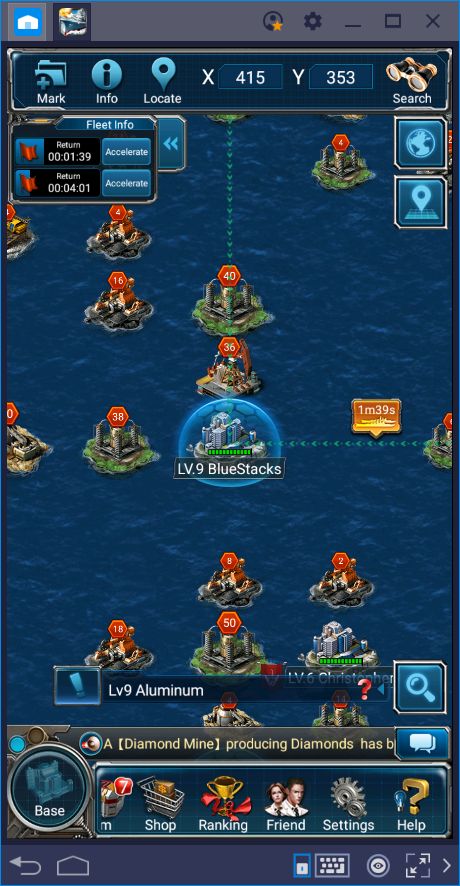
The campaign is one of the main draws of the game. Despite featuring a heavy focus on PvP—especially in the later parts of the game—, players will have to constantly expand their fleet and research new technologies to acquire more power. This power is then used for progressing through the main campaign, which consists of hundreds of missions and scenarios where you must engage enemy fleets in naval battles.
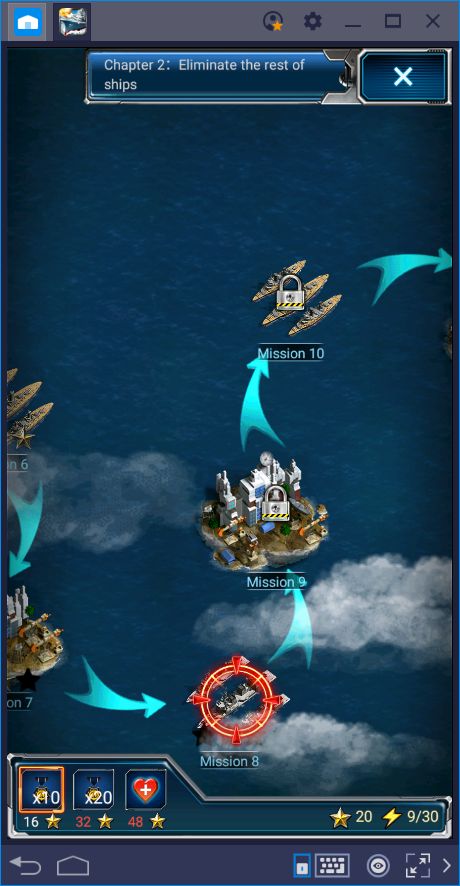
These encounters, like those in many other conquest games, are fully automated. However, in Fleet Command, instead of having your troops engage the enemies, and having to read the outcome of the fight in a battle report, the fights are fully animated. In this sense, you can see your fleet lining up with the enemy’s, and taking turns to shoot missiles and torpedoes at each other. However, while this feature is certainly not new to these games, we feel that it’s criminally underrepresented and that it makes a great addition to any game, especially for immersion purposes.

Fast Progression
Unlike most games where you purchase slower, costly upgrades to your buildings and units, everything moves much faster in Fleet Command. Especially at the beginning, buildings are constructed in a matter of seconds, and you can easily reach level 10 with your Command Center in under three hours. We played for about an hour and had already a level 8 Command Center and numerous production buildings at the maximum possible level. Furthermore, by issuing several gathering missions to resource spots in the map, we always had surplus materials and could continue to upgrade freely.
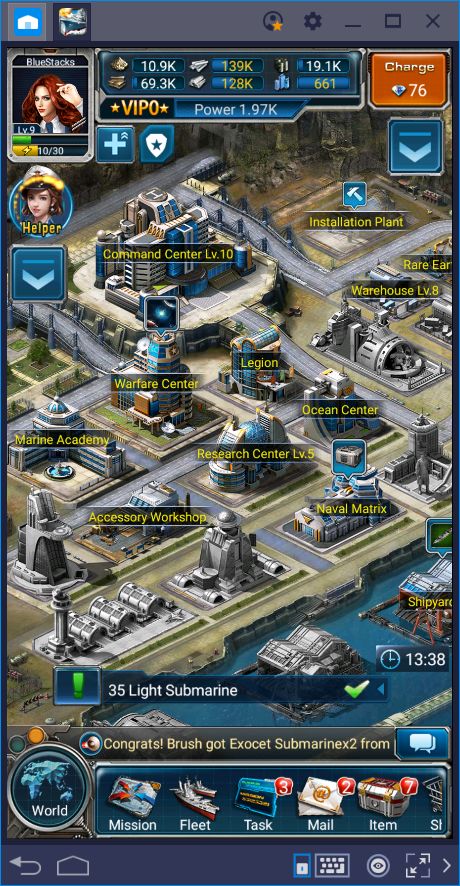
Play Fleet Command on BlueStacks
However, the fast leveling and construction in Fleet Command is offset by its maximum building levels. While in other games buildings were capped at 20 or so levels, you can easily reach over level 100 with some buildings in Fleet Command. Nevertheless, the game is designed so that you are constantly unlocking new features and gaining access to new troops in a timely manner. In this sense, while upgrading in this game can seem like an uphill battle at a glance, especially when reaching the mid-game, the reality is that you’re always occupied with other tasks and projects.
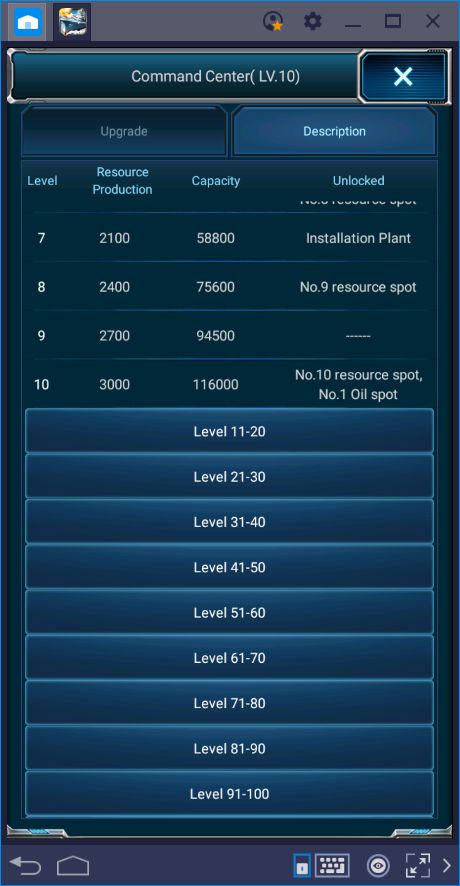
However, one of the most awesome aspects that we’ve found in this game is its UI. Fleet Command’s interface is sleek, responsive, and very fluid. Furthermore, in stark contrast with most games, it allows you to easily and quickly upgrade buildings. This fact is due to how the game handles upgrades: Instead of booting you to the main city view after issuing an upgrade, you’re left in the upgrade menu, from which you can easily accelerate the project and issue another one immediately. This feature is an absolute godsend for those of us who are just starting out; it dramatically speeds up the process of building and upgrading new production structures, without having to perform a cumbersome amount of clicking. Furthermore, with a few tweaks of our Keymapping Tool, we can accelerate this process even further. Take a look at our BlueStacks usage guide for Fleet Command to learn more.
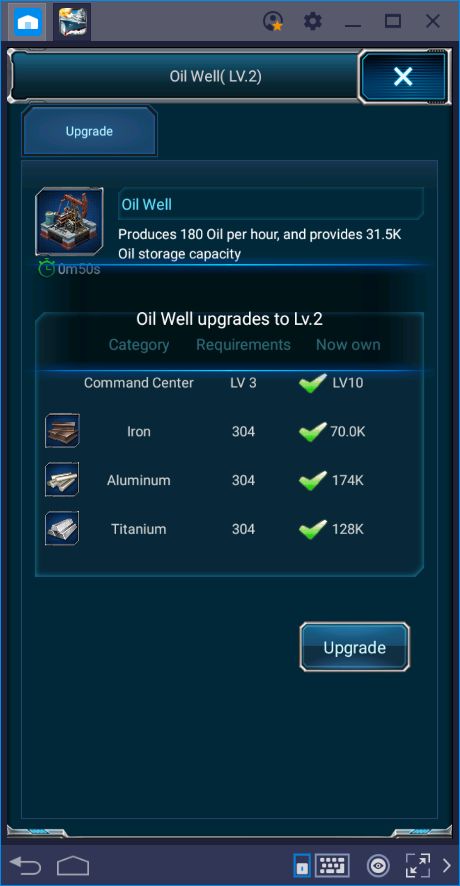
Trading Tutorials for Virtual Assistants
Fleet Command has a tutorial… and that’s pretty much all we can say about that.
Due to the formulaic design of most conquest games, tutorials are hardly necessary except for all but the most inexperienced users. And even then, the game’s basic mechanics are easy to grasp for the most part. However, there are some design concepts that are not immediately apparent, and that might require further explanation via a tutorial. Sadly, this doesn’t happen very often in Fleet Command.
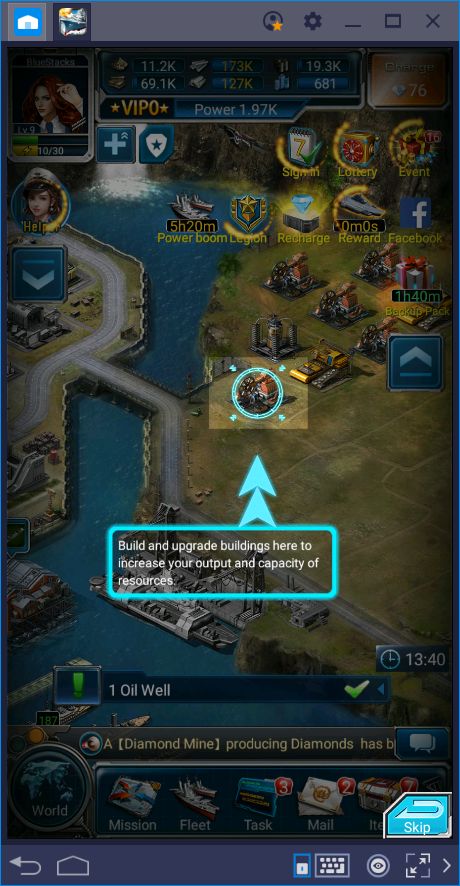
Once you start the game, you’ll immediately notice that the tutorial is very lackluster. Sure, while it definitely tells you what to do such as “click here,” “go there,” etc, it fails to address the purpose of your actions. Take the single-player missions, for example: As we mentioned above, these missions consist of battle scenarios against enemy fleets. The said battles are fought automatically by your fleet, so you only need to access each level and watch the fight unfold. However, once you reach the last mission of the first act, you’ll notice a sharp increase in difficulty as you won’t be able to breeze through the fight, unlike the other acts in the chapter. In this part, the game doesn’t really tell you what to do, nor how to get stronger, and it’s up to you to figure it out.
However, while Fleet Command doesn’t feature significant hand-holding like in other games, it offers a convenient virtual assistant that can explain most of the game’s basic concepts. By clicking on the “Helper” button, you can browse a variety of topics and even access interactive demos that explain features that are left out of the main tutorial.
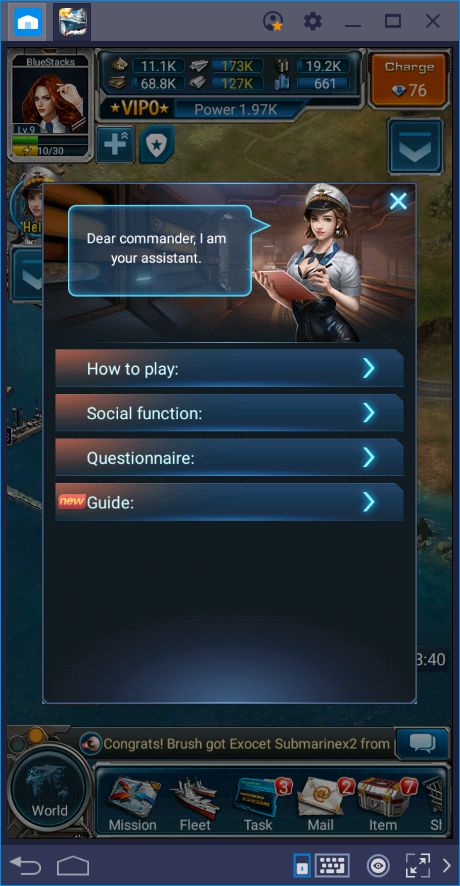
In short, Fleet Command is a conquest game that, while offering many of the aspects found in other titles, it also provides unique features that help it to stand out among the rest. If you have a hankering for naval combat and want to build fleets to dominate your enemies, then this is the game for you.

